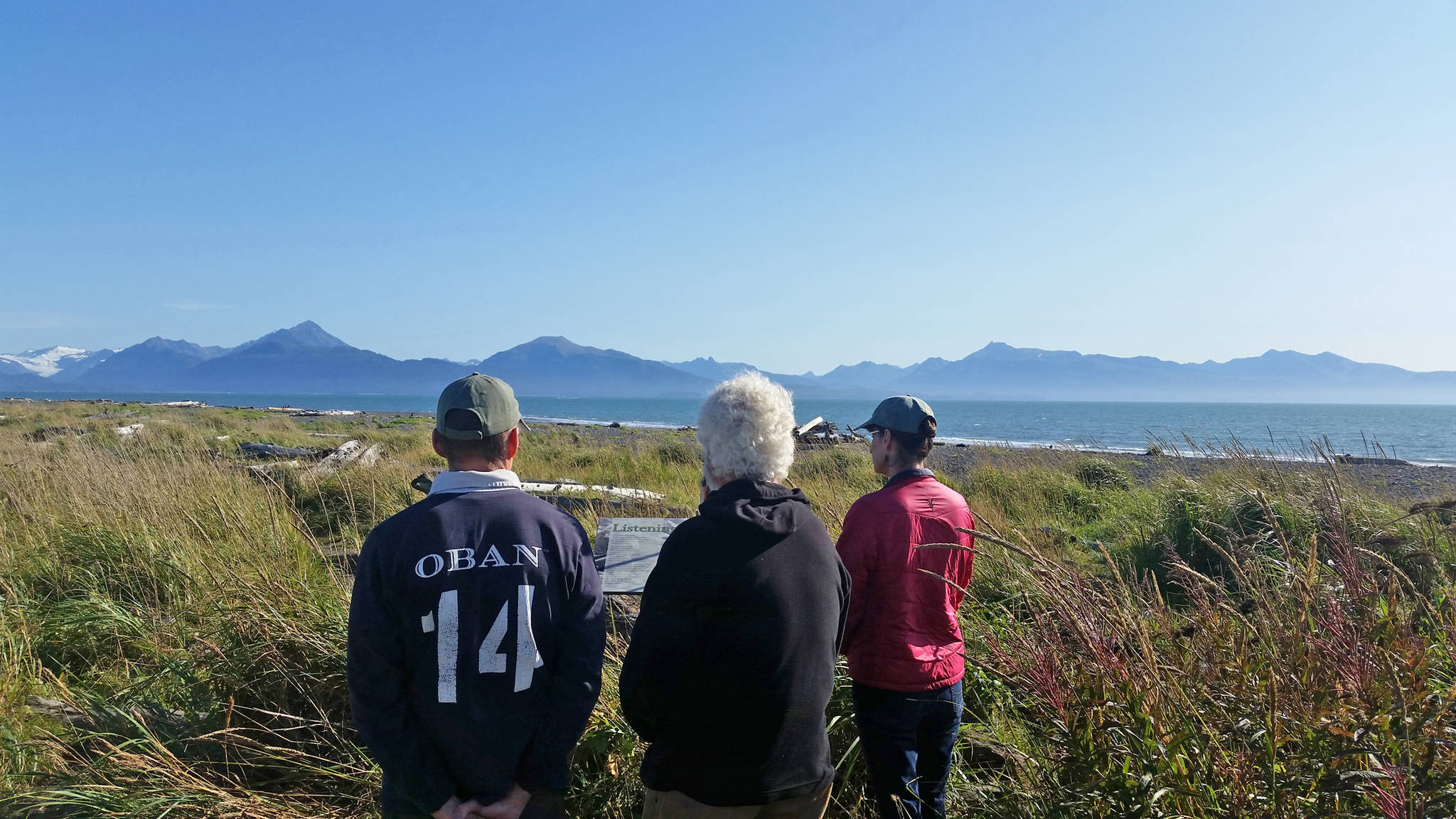Ten minutes before the performance was set to start, an at-capacity audience at Bunnell Street Arts Center already sat in silence. They watched as dancer Mariah Maloney slowly rolled and twisted her body on the floor. She was enacting the performance before it began; like the meeting of ecosystems in an estuary, Maloney was dancing beyond the event’s designated edge.
“Advice from an Estuary” premiered last Sunday at Bunnell Street Arts Center as an experimental creative collaboration rooted in the Beluga Slough. The performance featured poetry from local poet Wendy Erd, original music from respected composer Lawrence Moss and played by Homer musicians Mannfried Funk (cello) and Daniel Perry (violin), and dance choreographed and performed by Homer-grown artist Mariah Maloney.
Erd didn’t predict the creative growth that her poem would take on when she first wrote it in 2014. At the time she was doing an artist residency at Bunnell, commissioned to write a series of poems to accompany the Islands and Oceans Visitor Center’s remodeled estuary boardwalk. It was only later, after Moss read “Advice from an Estuary” on a visit to Homer, that this project took off. He reached out to Erd and soon the collaboration expanded to bring in Funk, Perry and Maloney.
As Erd describes it, the project manifested through the shape-shifting power of the estuary itself.
“I think the estuary entered me and it became a poem,” she said. “That poem entered (Moss) and it became a composition,” and then an instrumental performance, and then a dance.
“So now you’re the receptacles,” Erd said to the audience at Bunnell. “The estuary will enter you and we don’t know where it’s going.”
Thus, the process of making this multi-layered creative performance was (and continues to be) much like the poem’s estuarine subject itself: emergent, fluid and boundary-crossing. In fact, the first time that all of the collaborators met together was the day before the premiere took place. Speaking to Erd in the week leading up to the performance, she said “none of us know what the creative collaboration will be like exactly.”
Through the interconnectedness of subject and method, “Advice from an Estuary” was an event just as much about process as the performance itself.
Each of the collaborators took time to describe their process when they introduced their contributions to the work. Moss talked about using each line of Erd’s poem to guide a discrete passage in his composition. Maloney described making her New York City dance studio into an imagined estuary-space, even as the city continued to bustle outside.
Erd discussed “inhabiting” the estuary for a month, observing its contours and letting it seep into her for hours on end. Even when Erd wasn’t there, the estuary was always on her mind.
“I really thought about the estuary like a lover,” she said. “What is the estuary doing now? Is it filling? Is it draining?”
This inhabitation is central to “Advice from an Estuary” as a place-based work. The poetry, music, and dance are an invitation to inhabit the Beluga Slough and to allow the slough to inhabit us.
For the Arts Center, site-specificity was an explicit intent when commissioning first Erd’s poetry and later this larger collaboration. As Asia Freeman, Bunnell’s artistic director commented, “The estuary is the silent center, the invisible heart of Homer.” She sees the arts as a perfect mechanism to lift up the cultural and environmental role of the estuary in both Old Town and the greater Homer area.
Much like the emergent process thus far, “Advice from an Estuary”will continue to unfold in new forms. Getting there is simply a question of letting the estuary speak through art and artist. This is exactly what Erd was advised to do when she first began this project: “Just listen to what the estuary has to say.”
Mira Klein is a freelance writer living in Homer for the summer. You can contact her at mira.r.klein@gmail.com.


